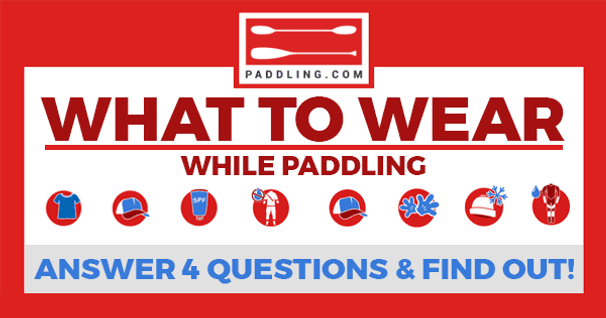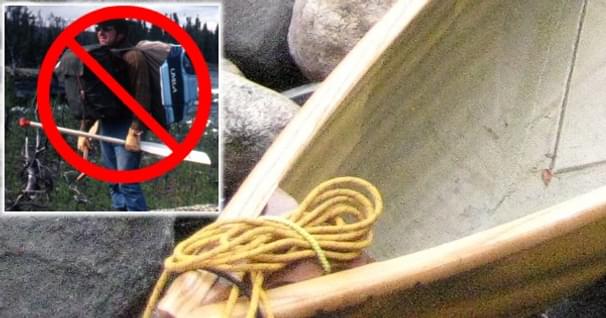Making the Switch to Cold Weather Camping
10 Inexpensive Ways to Convert to Cold Weather Camping
Whether you are a seasoned summer canoe/kayak camper or a novice, weekend warrior, you may be ready to consider extending your camping season. Three-season camping means extra consideration for the elements around you and acquiring additional equipment (usually in the form of warmer clothing) to help you maintain a healthy and safe comfort zone. And while the ponds, lakes and rivers in many parts of the country will ice over, there are still opportunities to get out and enjoy one more paddling campout. You can extend your summer gear list for colder season camping without breaking the bank on new equipment.
1. Layers of Clothing
As someone who participates in the outdoors, we should all know the advantages of layering. For colder weather, simply add layers or increase the bulk of those worn in cold weather. Wool and synthetics are excellent layering fabrics that help you retain heat. Simply adding a layer or including a thicker weave can help you stay comfortably satisfied. You might consider a union suit. You probably already have this gear if you are someone who paddles throughout most of the year.
2. Cover Your Extremities
If you are a power paddler you probably haven't worried about staying warm. Wearing a hat and gloves/mittens is an easy way to warm your entire body. 25% of your body heat escapes through your head. As the season cools down, carrying gloves and a hat/cap/hood may be the only additional clothing you'll need in milder fall climates. Thin gloves made of synthetic fabric can be used as an outer glove when mildly cool, or as a liner under an insulated glove or mitten in more extreme conditions (review some glove options with this article). Keeping your feet dry and warm by wearing wool socks can allow you to extend the use of a favorite waterproof summer boot. The big factor, of course, is wearing fabric that keeps you warm even when wet – an obvious plus with most paddling gear.
3. Go with the Foam
Maybe you've been sneaking by with an "air" mattress during the summer. You may want to consider foam or closed-cell pads as they are the key to a warm night's sleep. On an air mattress you sleep above the ground on a non-insulated layer of cold air. Closed cell foam pads buy you relief by having a warming layer between you and the ground.
4. Sleeping Bag Liner
One of the easiest, most cost-effective ways to add warmth to a sleeping bag is to include a liner that fits inside your regular bag. A summer bag might only be good down to 50 degrees, a three-season bag just down to freezing. Adding something as simple as a flannel sheet to your sleeping bag can increase its "warming" affect by at least ten more degrees. Add a wool or synthetic pair of long johns as sleeping attire and you can probably add at least another 7-10 degrees on top of that.
5. Added Ground Cloth
Another way to extend your sleeping bag's warming efficiency is to use a heat-reflecting ground cloth (space blanket) inside the tent, as the first layer upon which you sleep. It will help reflect back your body's heat. It's a good dry layer, too, presuming you don't sweat and pass that perspiration out onto the waterproof layer of the blanket. The space blanket is a handy body shelter on those colder nights as well.
6. Insulator Cooler
Just as it can keep things from getting too warm, it can also keep food items from freezing during winter camps. The colder it gets the more insulation you'll want around the cooler. For fall, it usually works for taking the frost off things and prevents surface ice from forming. It's especially good for keeping veggies fresh, too. If there's snow on the ground and temperatures are going to be extremely cold – burying a cooler in the snow is a good way to add extra insulation around the cooler. The snow will actually help keep items inside from freezing unless it's really cold out there!
7. Lights, Lanterns and Lamps
Besides dropping temperatures, decreased sunlight is another factor in shoulder season outings. Remember your headlamp – it's great for close-up food prep or reading while lanterns and lamps can cast a warming glow on the campsite. Extreme cold can weaken batteries so bring extras. Be very careful when refueling gas lanterns so you don't spill icy cold fuel on your bare skin.
8. Build the Right Kind of Fire
Different shapes of fires direct heat in different ways (see my article on types of campfires). A teepee fire directs the heat upward towards the center – great for quickly heating an overhanging pot of water; a log-cabin or pyramid fire enables the stacked wood to fall into itself as it burns thus creating a good bed of coals in/on which you can cook; a reflector fire is any fire behind which you create a reflecting surface that heat can "reflect" back off and be directed forward towards your tent or dining tarp. Many of us cook using camp stoves during the summer. You may want to reacquaint yourself with your stove for cold weather starts and consider using a fire for back-up cooking as well.
9. Keep Hydrated
It's easy to forget to drink enough water in the winter. We often don't realize we are losing water through perspiration. A hot cup of tea warms the innards but also encourages chilling responses to Ma Nature’s call in the middle of the night. Stowing a water bottle under several layers of clothing keeps it from freezing. Instead of having to light a stove or build a fire to melt snow for water, try adding snow to the water still in your bottle – a little at a time means you will soon refill it without having to use external heat.
10. Keep Fueled and Energized
Eat! You need to stoke your internal furnace! You need calories to burn in the winter, especially if you are activity recreating (cross country skiing, snowshoeing, etc.). It's often easier to prepare one-pot meals (stews, thick soups, re-heated casseroles, etc.) than to try to keep separate courses warm. Check the nutrition charts on bars and other foods to see if you are really getting the calories you think you are. Also, many freeze-dried foods and dehydrated "just-add-water" packages contain an excessive amount of sodium – for your health's sake, read the labels.
Some of these tips may require you to add some accessories to your gear. However, they are easy, long-term and rather inexpensive fixes that can literally add months to your camping window each season (get a few more suggestions from this article). As long as you can stay dry and warm, there really isn't a time of year you can't enjoy camping. If you have to rack up the canoe until next season, you can at least extend the use of some of your gear to enjoy a cost-effective extension of camping opportunities.
The challenge index may rise as the temperature drops, but once you acclimate yourself to that environment, a whole new world of camping opens up for you.
Be safe and have fun out there.
Related Articles
Wondering what to wear when going paddling? Answer 4 quick questions and instantly learn what you need…
In 1971, I outfitted and guided three wealthy Chicago men--the least affluent of which earned a quarter…
Drying is probably the most ancient way to preserve food for a very long period of time. You have…
In the mid-seventies, I shared an afternoon with the famous woodsman, Calvin Rutstrum, whose flagship…




